Sutton Hoo: New viewing tower opens at Anglo-Saxon burial ground
- Published
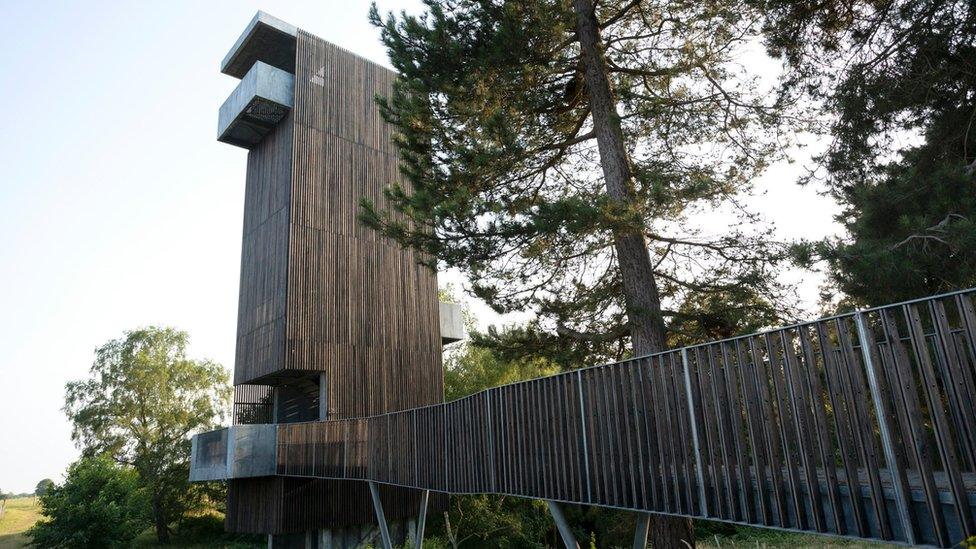
The viewing tower overlooks the burial mounds, which were excavated shortly before the start of World War Two
A new viewing tower at an Anglo-Saxon burial ground has officially opened as part of a £4m revamp of the site.
The 17m (56ft) high construction is at Sutton Hoo, near Woodbridge in Suffolk, which featured in the Netflix film The Dig.
Treasure uncovered there in 1939 has been described as one of the "greatest archaeological discoveries of all time".
The National Trust said the tower would give visitors a "new perspective".
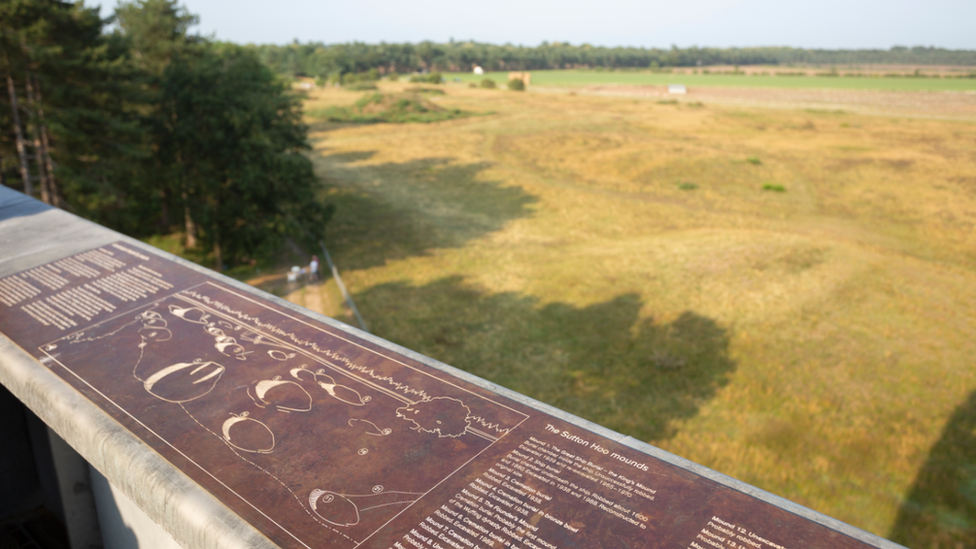
The burial mounds are close to the River Deben
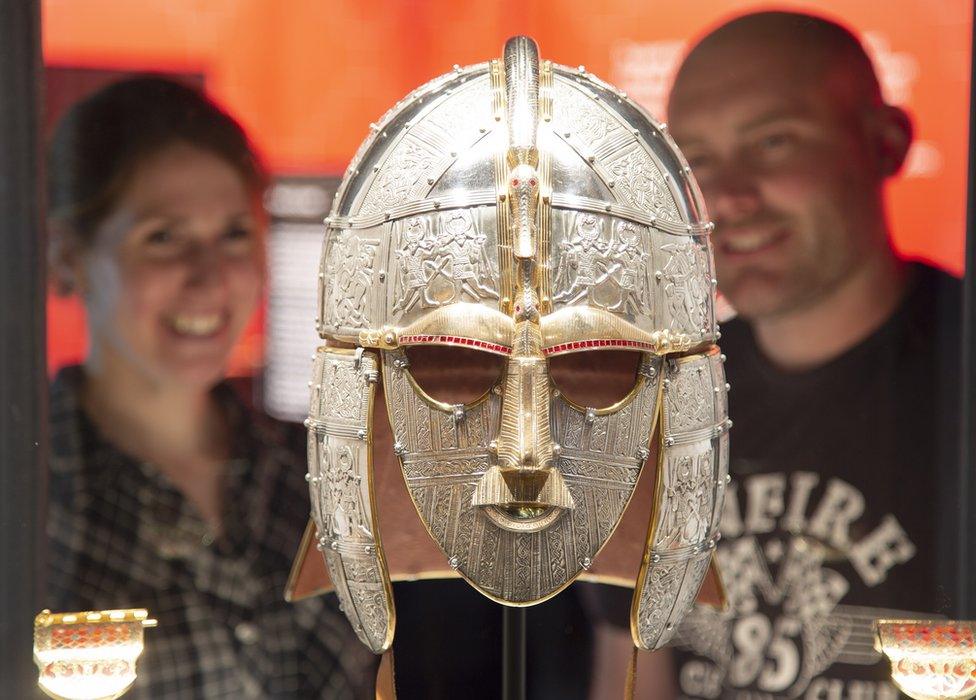
A replica of the helmet is at Sutton Hoo - the original remains are at the British Museum in London
Sutton Hoo is believed to contain the grave, burial ship and burial treasures of King Rædwald - the 7th Century Anglo-Saxon ruler of East Anglia.
The burial was revealed after landowner Edith Pretty called in local archaeologist Basil Brown to investigate a series of mysterious earth mounds on her estate on the Deben estuary.
His discovery of a 1,300-year-old ship burial, including a warrior's helmet, gold belt buckle, sword and shield, revolutionised historians' understanding of the 7th Century.
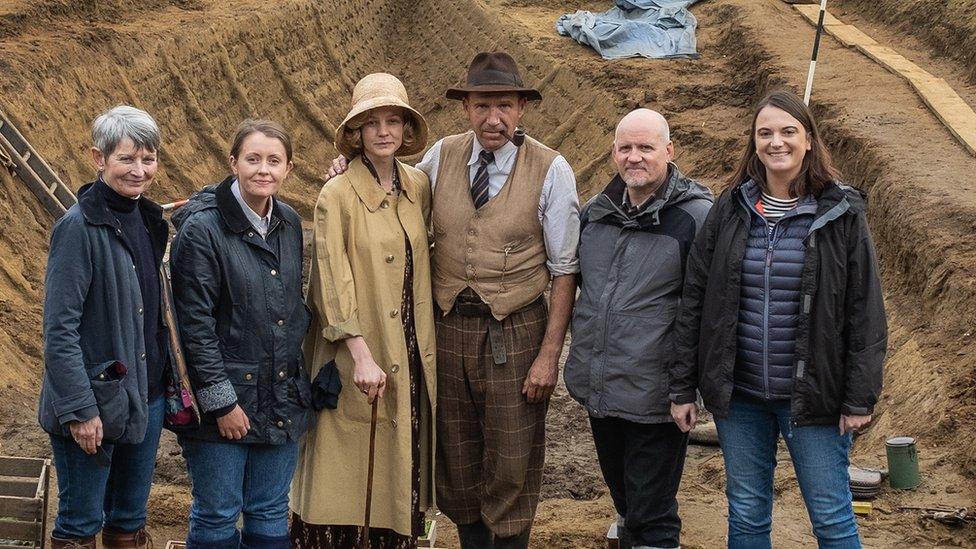
The Sutton Hoo National Trust team with The Dig actors Carey Mulligan and Ralph Fiennes (centre)
Sue Brunning, from the British Museum, has said: "The Sutton Hoo ship burial is one of the greatest archaeological discoveries of all time."
The new tower, which the National Trust called "the final piece in the project to transform the visitor experience", overlooks the 18 burial mounds within the royal burial ground and the River Deben.
The trust, which owns the site, said it had previously "been hard to get an appreciation of just how close" the burial ground was to the river.
"During the Anglo-Saxon period, the royal burial ground would have sat surrounded by a vast expanse of open heathland, with views stretching down towards the river," it said on its website, external.
"You can now get a whole new perspective."
Trust general manager, Nick Collinson, said: "The tower gives visitors great birds-eye views of the Royal Burial Ground and the wider landscape, but also of the Deben estuary, across to Woodridge and even Felixstowe Port.
"The Tower really helps to connect the Royal Burial Ground with the estuary which would have been the highway of the time, and an essential part of why the burial ground was located here in such a symbolic position in this landscape in the 7th Century."

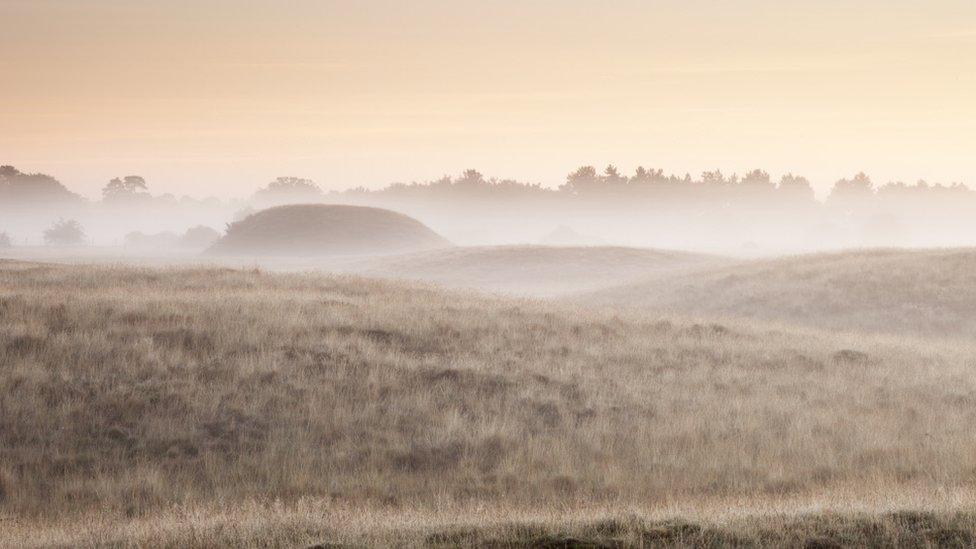
What was found at Sutton Hoo?
The 86ft (27m) oak ship was the tomb of an Anglo-Saxon ruler who was buried around 1,300 years ago along with his possessions, warrior's uniform and equipment for hosting a feast in the afterlife
The treasures found inside included a warrior's iron helmet, a magnificent sword, Byzantine silverware, gold jewellery, a lavish feasting set and a whalebone casket
The finds revealed extensive trading links with Scandinavia, the Byzantine Empire (centred on Constantinople - modern-day Istanbul) and Egypt.
They revolutionised historians' understanding of the 7th Century, previously seen as a backward time when England was divided into Anglo-Saxon kingdoms
The treasures are now at the British Museum, while the site is owned by the National Trust
Source: BBC

Find BBC News: East of England on Facebook, external, Instagram, external and Twitter, external. If you have a story suggestion email eastofenglandnews@bbc.co.uk
Related topics
- Published27 June 2021

- Published30 January 2021
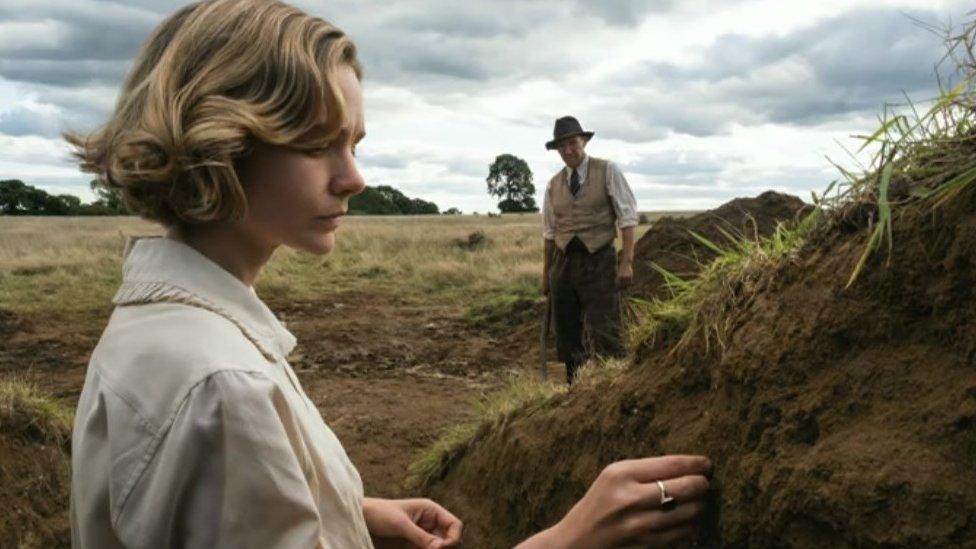
- Published30 January 2021
- Published29 January 2021

- Published17 January 2021
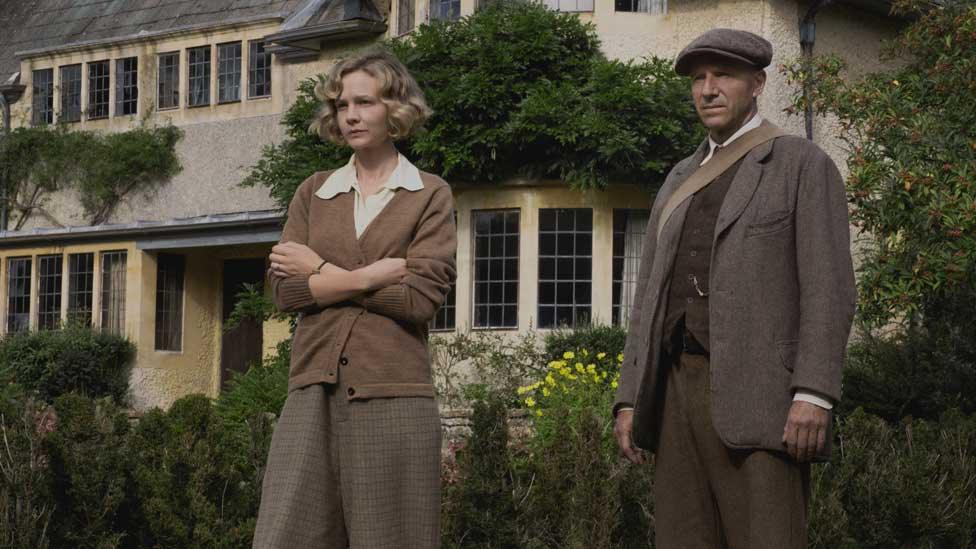
- Published14 January 2021
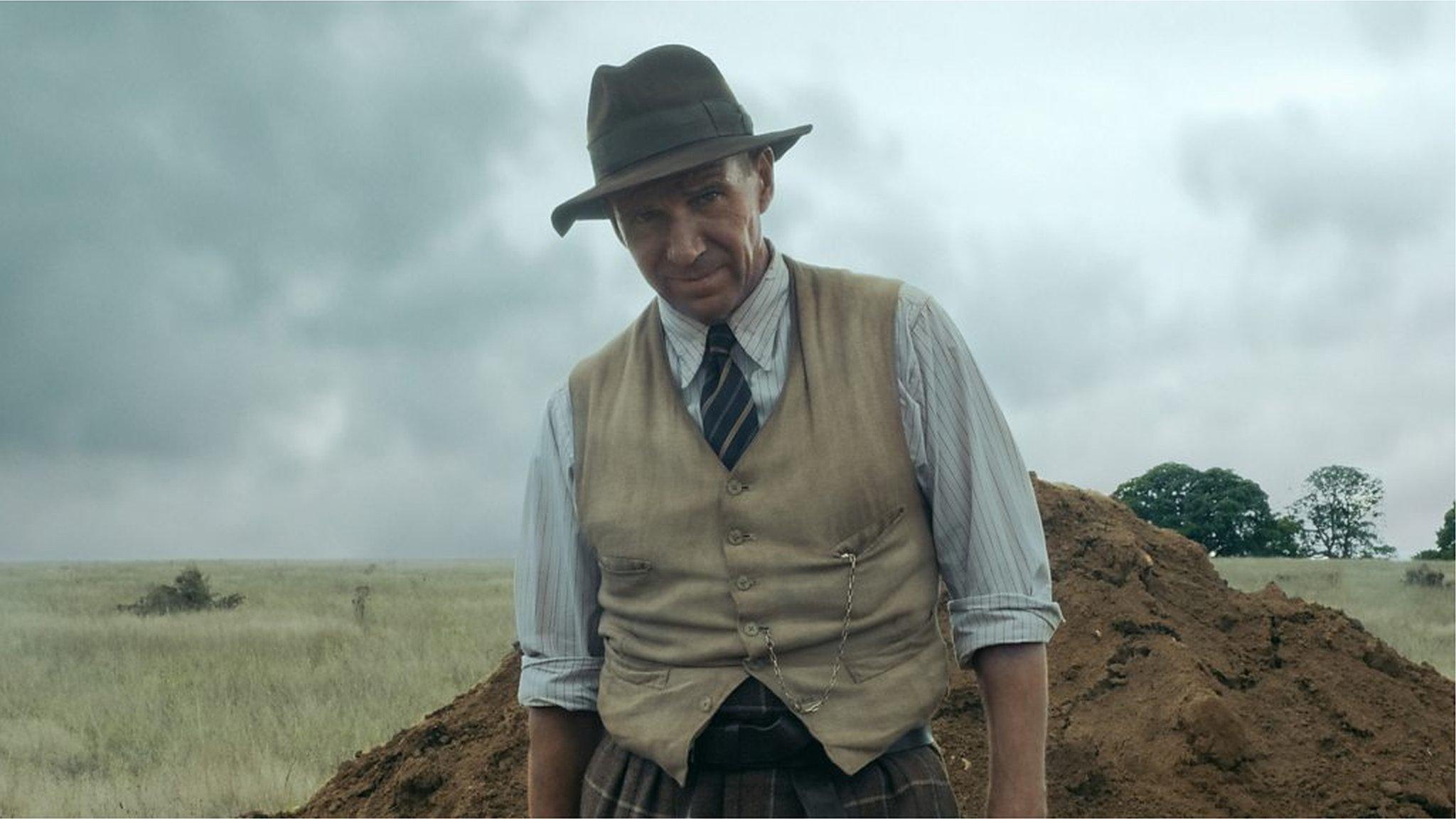
- Published16 September 2020
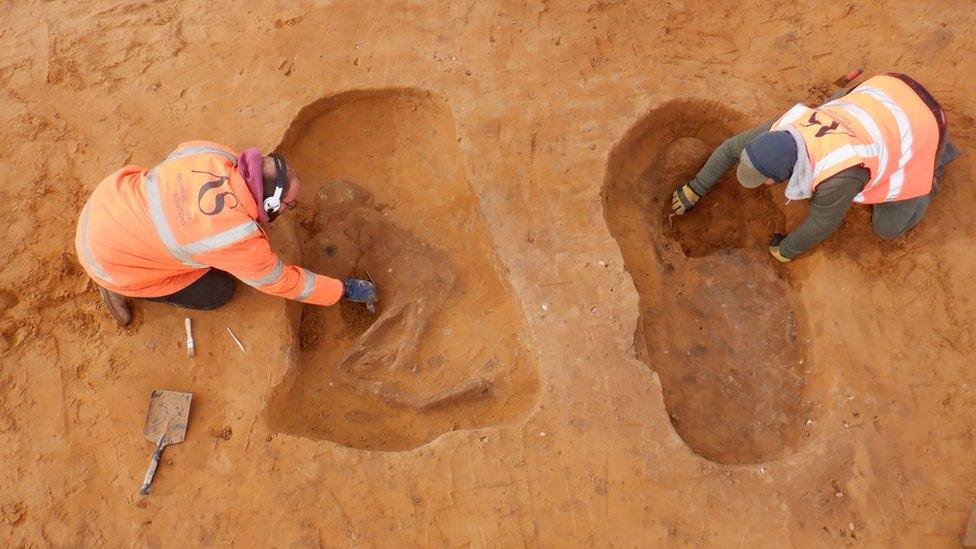
- Published26 February 2020

- Published5 August 2019
